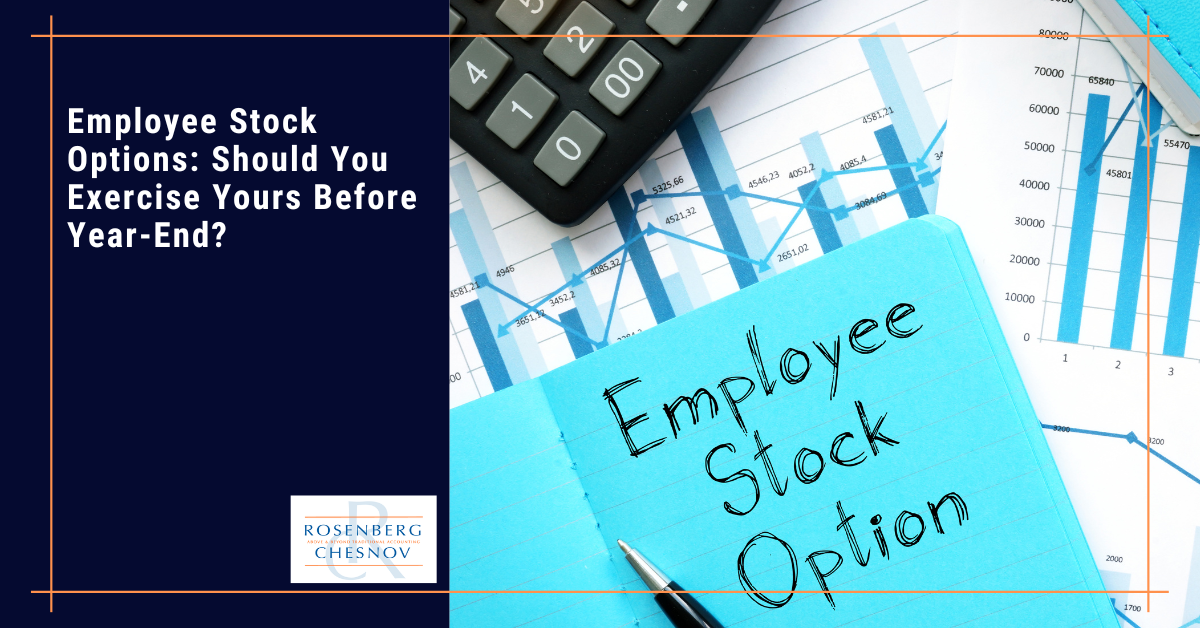How do employee stock options work?
An employee stock option is exactly what it sounds like: the option for an employee to purchase stock in their company. The biggest advantage, and the thing that makes stock options so attractive, is that it gives the employee the right (but not the obligation) to buy or sell the stock within an agreed-upon timeframe — at an agreed-upon price. That means that if you accept stock options, you can buy the stock at a specific price regardless of the stock’s actual share price within a set period.
There are two basic categories of employee stock options (ESOs):
- Statutory (qualified) stock options are granted as part of an employee stock purchase plan or incentive stock option (ISO) plan.
- Nonstatutory (non-qualified) stock options are granted without any plan.
The employer determines the type of option offered to an employee, and the main difference between these two categories is how the IRS treats them for tax purposes. The good news is that you are unlikely to incur any taxes when you receive the option in both cases.
To learn more about how employee stock options are taxed and reported and how to get the most out of yours, look at our previous article here.
What is the best way to exercise stock options?
Exercising your stock options can be fairly straightforward — or at least as clear as a sophisticated financial transaction can be! That said, depending on how you approach the transaction, it can also be pretty complex. And, as in any such transaction, it’s vital to ensure you approach it carefully and thoughtfully, with all the relevant information at your disposal.
The most common way to exercise stock options is to purchase the underlying shares at the exercise price and then sell them on the open market for the current market price (ideally, for a profit). When combining both of these steps into one, purchasing and selling your shares simultaneously without using any of your own cash to cover the transaction, the process is known as a cashless exercise.
Another type of exercise transaction you could initiate is an exercise-and-hold, in which you exchange cash for stock and then hold the stock to sell at a future time when it appreciates. This may be useful, especially if you are nearing the end of your vesting period and the company’s stock is expected to increase. Alternatively, you could initiate an exercise-and-sell-to-cover transaction, in which you sell just enough of your new shares to cover the cost of the purchase, as well as any related taxes and fees. You can then hold the remainder of your shares, again in anticipation of their value appreciating.
When should you exercise stock options?
Much of getting the most out of your employee stock options comes down to timing. On one hand, your vesting schedule won’t last forever, so you’ll need to act before your options expire. On the other hand, it may be advantageous to spread out the sale of your stocks over time, to cushion their value against market fluctuations.
So, what factors should you consider when deciding whether to exercise your options before 2022 becomes 2023?
First, it’s vital to evaluate current market conditions, the future outlook of the company, and your own financial situation. There may also be tax implications specific to your case that will make exercising now more beneficial than waiting until the new year.
For example, if your stock options are nearing expiration, exercising sooner rather than later may help ensure that you can benefit from potential future gains in the market price of your shares. Additionally, depending on your circumstances, exercising your options before the end of the year can help you manage your tax liability.
Remember, exercising your options is a taxable event. That means you must consider how doing so will impact your income tax bill. More importantly, it would help if you also made the decision in context with your broader financial goals and planning.
Furthermore, initiating an exercise-and-hold or an exercise-and-sell-to-cover and selling a portion of your shares while retaining another portion can spread the income from your exercise over multiple years, potentially reducing your tax burden in any given year.
If you exercise non-qualified stock options, the income you gain from the transaction is subject to regular income taxes on the amount of the difference between the purchase price and the current market value of the stock. Meanwhile, while selling qualified or incentive stock options doesn’t incur regular income tax at exercise, the “bargain element” (the aforementioned difference between price and value) may create an alternative minimum tax adjustment, which can land you a hefty tax bill. Of course, depending on your circumstances and expectations for the new year, it may be helpful for you to take some of that tax burden this year rather than next.
Tax considerations are not the only factor.
You can also sell your stocks to fund another purchase or diversify your investments.
Regardless, you should always try to exercise your stock options when the stocks have value or when selling them on the open market will yield you a profit. If you expect the value of your shares to decrease long-term, consider exercising while they are at their peak. Of course, it all depends on the particulars of your circumstances.
Finally, you should also consider whether your company is public or private. Public or soon-to-be public companies may have liquidity (although this is not the case one hundred percent of the time, as companies sometimes have blackout or lockup periods when shareholders are restricted from selling stocks). On the other hand, employees of private companies often don’t have an excellent way to convert stock options into cash until a liquidity event, such as an IPO, recapitalization, or the sale of the company.
Should you exercise your employee stock options before the end of the year?
There are plenty of factors to weigh when deciding on the timing of exercising your stock options. Every situation is different, and exercising your options is never entirely without some degree of risk. However, broadly speaking, you should consider the current market conditions, the company’s outlook, your financial priorities, and the tax implications of the transaction.
You may want to consider exercising your employee stock options before the clock strikes midnight on December 31st if:
- If the market value of your company’s stocks is at a high-water mark
- If the end of your vesting period is approaching
- If exercising your options now fits into your overall financial strategy.
- If the tax burden is more advantageous for this year than it will be next year
Of course, for the best advice regarding your own unique circumstances, nothing can replace the counsel of an experienced tax professional.
Would you like some help?
If you are a client and would like to book a consultation, call us at +1 (212) 382-3939 or contact us here to set up a time.
If you aren’t a client, why not? We can take care of your accounting, bookkeeping, tax, and CFO needs so that you don’t have to worry about any of them. Interested? Contact us here to set up a no-obligation consultation.
Stay informed
Interested in receiving updates in your mailbox? Check out our newsletter, full of information you can use. It comes out once every two weeks, and you can register for it below.





